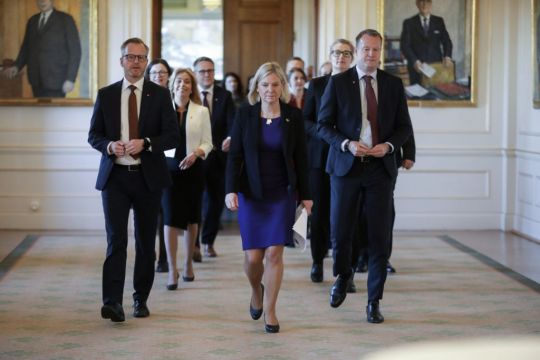Sweden’s first female prime minister, Magdalena Andersson, has announced her one-party minority government, with only a few changes at cabinet level from the previous administration.
Ms Andersson, who had been Sweden’s finance minister, chose Mikael Damberg to replace her in that role. Mr Damberg previously had been home affairs minister.
The prime minister, who is the leader of the Social Democratic party, was elected again on Monday as the Scandinavian nation’s premier.

She resigned last week after just seven hours as prime minister when a budget defeat prompted then-coalition partner the Greens to quit her two-party coalition.
The move followed the rejection of her government’s budget proposal in favour of one presented by opposition parties, including the right-wing populist Sweden Democrats, who are rooted in a neo-Nazi movement.
On Monday, Ms Andersson was named as prime minister even though 101 parliamentarians voted in favour of her appointment and 173 were against it, with 75 abstentions.
Under the Swedish constitution, prime ministers can be named and can govern as long as a parliamentary majority – a minimum of 175 MPs – does not oppose them.

Ms Andersson kept Ann Linde as foreign minister and Peter Hultqvist as defence minister.
The Greens held, among others, the environment and culture ministries in the previous government.
Social Democrats Annika Strandhall and Jeanette Gustafsdotter have now taken over the two posts.
Ms Andersson has replaced Stefan Lofven as party leader and prime minister, roles he relinquished earlier this year.
She will be formally installed following an audience with King Carl XVI Gustav, Sweden’s figurehead monarch, later on Tuesday.
Mr Lofven, who had been leading the Swedish government in a caretaker capacity, will step down.
Sweden’s next general election is scheduled for September 11 next year.







